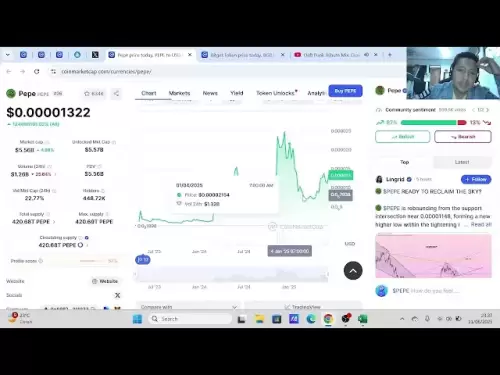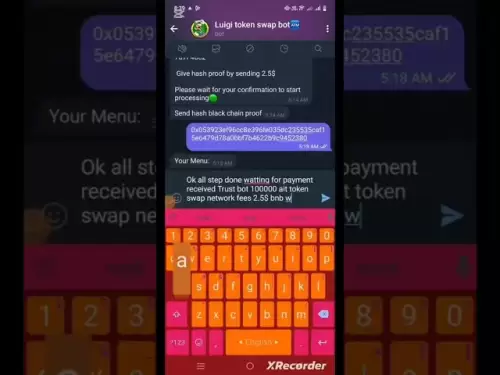-
 Bitcoin
Bitcoin $109,098.6591
-0.48% -
 Ethereum
Ethereum $2,828.9498
2.87% -
 Tether USDt
Tether USDt $1.0002
0.02% -
 XRP
XRP $2.2997
0.23% -
 BNB
BNB $668.6240
-0.28% -
 Solana
Solana $163.8453
0.13% -
 USDC
USDC $0.9999
0.01% -
 Dogecoin
Dogecoin $0.1967
1.30% -
 TRON
TRON $0.2783
-4.26% -
 Cardano
Cardano $0.7087
0.34% -
 Hyperliquid
Hyperliquid $42.4552
2.68% -
 Sui
Sui $3.4498
0.07% -
 Chainlink
Chainlink $15.2179
0.25% -
 Avalanche
Avalanche $21.9323
-0.80% -
 Stellar
Stellar $0.2803
0.27% -
 Bitcoin Cash
Bitcoin Cash $428.0436
-2.08% -
 UNUS SED LEO
UNUS SED LEO $9.0406
2.13% -
 Toncoin
Toncoin $3.2717
-0.76% -
 Shiba Inu
Shiba Inu $0.0...01319
0.21% -
 Hedera
Hedera $0.1755
-2.35% -
 Litecoin
Litecoin $92.5655
0.47% -
 Polkadot
Polkadot $4.2533
0.24% -
 Monero
Monero $331.7950
-2.01% -
 Ethena USDe
Ethena USDe $1.0007
0.00% -
 Bitget Token
Bitget Token $4.7797
-0.38% -
 Pepe
Pepe $0.0...01275
-0.16% -
 Dai
Dai $0.9998
0.01% -
 Uniswap
Uniswap $8.1193
-2.22% -
 Pi
Pi $0.6341
-1.41% -
 Aave
Aave $308.4954
0.67%
Research on the application of BTC's gap theory in BTC's quarterly contracts
BTC quarterly futures gaps often signal key trend shifts, offering traders strategic entry points when combined with volume and event analysis.
Jun 10, 2025 at 11:14 pm
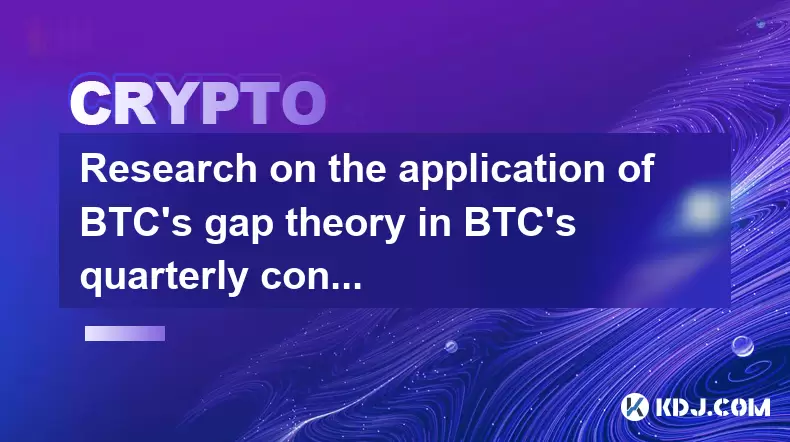
Understanding BTC's Gap Theory in Cryptocurrency Trading
In the world of cryptocurrency trading, BTC's gap theory has emerged as a significant concept among traders and analysts. A "gap" refers to a discontinuity or empty space on a price chart where no trading activity occurs between two consecutive periods. These gaps often appear due to sudden shifts in market sentiment, news events, or large trades executed outside regular market hours. In Bitcoin (BTC) trading, especially within quarterly futures contracts, understanding how these gaps form and behave can provide valuable insights into potential price movements.
Gaps are typically categorized into four types: common gaps, breakaway gaps, runaway gaps, and exhaustion gaps. Each type carries different implications for traders. For example, breakaway gaps may signal the start of a new trend, while exhaustion gaps could indicate that a trend is nearing its end.
The Role of Quarterly Futures Contracts in BTC Price Dynamics
Quarterly futures contracts are derivative instruments that allow traders to speculate on the future price of BTC without owning the underlying asset. These contracts have fixed expiration dates, usually falling on the last Friday of each quarter. As the expiration date approaches, market participants adjust their positions, which can lead to increased volatility and the formation of notable price gaps.
The interplay between BTC spot prices and quarterly futures contracts creates unique market conditions. Traders who understand this relationship can better anticipate potential gaps, especially during contract rollover periods when open interest shifts from the expiring contract to the next quarterly one.
How Gaps Form in BTC Quarterly Contracts
Gaps in BTC quarterly contracts typically occur around key market events such as:
- Major macroeconomic announcements
- Significant regulatory developments
- Exchange outages or technical issues
- Large whale transactions
These events can cause abrupt changes in supply and demand dynamics, leading to price jumps that leave visible gaps on candlestick charts.
One of the most commonly observed phenomena is the weekend gap effect. Since crypto markets operate 24/7, gaps can still appear at the start of a new trading session if major news breaks over the weekend or holidays. This is particularly relevant in quarterly contracts, where overnight positioning can result in substantial slippage upon market reopening.
Analyzing Historical BTC Gap Patterns in Quarterly Contracts
Historical data shows that BTC quarterly contracts often experience recurring gap patterns during specific phases of the market cycle. For instance, during bullish runs, runaway gaps tend to appear frequently, signaling strong momentum. Conversely, during bearish corrections, exhaustion gaps become more prevalent, suggesting that selling pressure is waning.
To conduct a proper analysis, traders should:
- Use platforms like Bybit, Binance, or OKX that offer detailed historical futures data
- Export candlestick charts with timeframes ranging from 1-hour to daily intervals
- Identify gaps using technical indicators such as volume spikes or Bollinger Band expansions
- Cross-reference gaps with known market events (e.g., halvings, exchange listings, or ETF approvals)
It's crucial to filter out minor gaps and focus only on those accompanied by significant volume or volatility spikes. Not all gaps are meaningful, and distinguishing between noise and actionable signals is essential for effective trading strategies.
Applying Gap Theory in BTC Quarterly Contract Trading Strategies
Traders can incorporate gap theory into their BTC quarterly contract strategies through several methods:
- Gap Fill Strategy: Many gaps eventually get filled, meaning the price returns to the level before the gap occurred. Traders can place limit orders near the gap area to profit from this tendency.
- Breakaway Gap Momentum Play: When a breakaway gap appears after a consolidation phase, it can signal the beginning of a new trend. Entering early with stop-loss orders just below the gap zone can yield favorable risk-reward ratios.
- Exhaustion Gap Fade Strategy: If a gap forms after a prolonged trend and is followed by a reversal candlestick pattern, fading the move (trading against the gap direction) might be viable.
Each strategy requires strict risk management protocols, including position sizing, trailing stops, and predefined take-profit levels.
Effective execution also involves monitoring order book depth and funding rates on exchanges offering BTC quarterly contracts. These metrics help gauge whether the gap is supported by genuine liquidity or merely short-term manipulation.
Frequently Asked Questions
What causes a gap in BTC quarterly contracts?
Gaps in BTC quarterly contracts are primarily caused by sudden imbalances in buy or sell pressure that occur between two consecutive candles. Common triggers include unexpected news, regulatory updates, macroeconomic reports, or off-exchange whale activities. The non-stop nature of crypto markets means that gaps can still form even though there’s no formal market close.
Can gaps in BTC quarterly contracts be predicted accurately?
While some gaps follow predictable patterns—such as those tied to contract rollovers or known event dates—not all gaps can be predicted with certainty. Traders often use tools like economic calendars, sentiment analysis, and volume profile indicators to increase the probability of identifying potential gap zones.
Is every gap in BTC quarterly contracts tradable?
No, not every gap is worth trading. Only gaps accompanied by high volume, clear directional bias, and alignment with broader market trends should be considered for entry. Minor gaps that occur during low liquidity periods or sideways markets are generally less reliable and carry higher risk.
How do traders confirm if a gap will be filled?
Traders look for confirmation signals such as price retracing back toward the gap zone, increased volume near the gap area, or support/resistance levels aligning with the gap. Technical tools like Fibonacci retracements, pivot points, and moving averages are commonly used to assess the likelihood of a gap fill.
Disclaimer:info@kdj.com
The information provided is not trading advice. kdj.com does not assume any responsibility for any investments made based on the information provided in this article. Cryptocurrencies are highly volatile and it is highly recommended that you invest with caution after thorough research!
If you believe that the content used on this website infringes your copyright, please contact us immediately (info@kdj.com) and we will delete it promptly.
- Interactive Strength Inc. (Nasdaq: TRNR) Announces Plans to Acquire Fetch.ai Tokens to Create the World's First Corporate AI Crypto Treasury
- 2025-06-12 05:40:19
- The memecoin market has displayed a sharp recovery this week as major tokens consistently record positive trading days
- 2025-06-12 05:40:17
- DWF Labs-backed Falcon Finance Protocol, Synthetic Dollar USDf, Announces BitGo Integration
- 2025-06-12 05:40:17
- Fartcoin Launches on Coinbase with Regional Restrictions
- 2025-06-12 05:40:17
- Nasdaq Has Officially Published the 19b-4 Form for the 21Shares SUI ETF to the SEC’s Public Register
- 2025-06-12 05:40:16
- Nasdaq Publishes 19b-4 Form for the 21Shares SUI ETF
- 2025-06-12 05:40:16
Related knowledge

Bitcoin Super Simplified Science Popularization No need to worry about not understanding
Jun 12,2025 at 04:02am
What Is Bitcoin in the Simplest Terms?Bitcoin is a decentralized digital currency, which means it allows people to send and receive money directly over the internet without needing banks or governments. It was created in 2009 by an anonymous person or group using the pseudonym Satoshi Nakamoto. The core idea behind Bitcoin is to give individuals full co...

What is Bitcoin? Learn Bitcoin in three minutes
Jun 12,2025 at 02:57am
What Is Bitcoin?Bitcoin is a decentralized digital currency, also known as a cryptocurrency, that enables peer-to-peer transactions without the need for intermediaries like banks or governments. It was introduced in 2009 by an anonymous individual or group using the pseudonym Satoshi Nakamoto. The core idea behind Bitcoin is to offer a form of money tha...
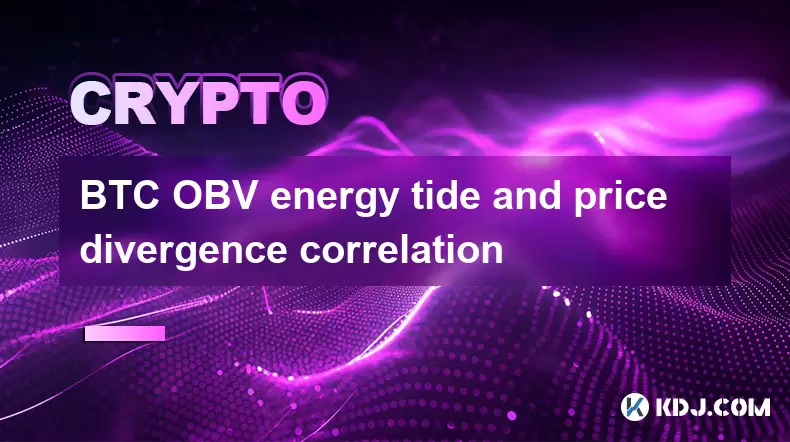
BTC OBV energy tide and price divergence correlation
Jun 10,2025 at 11:57am
Understanding BTC OBV Energy TideBTC OBV (On-Balance Volume) Energy Tide is a term used to describe the combination of On-Balance Volume analysis and energy tide indicators in the Bitcoin market. OBV is a technical indicator that uses volume flow to predict changes in stock or cryptocurrency prices. It adds volume on up days and subtracts volume on down...
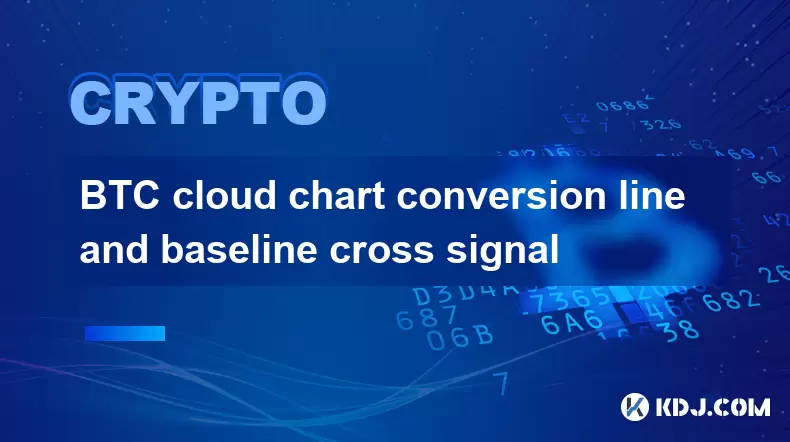
BTC cloud chart conversion line and baseline cross signal
Jun 10,2025 at 03:14am
Understanding BTC Cloud Chart: Ichimoku Kinkō Hyū BasicsThe BTC cloud chart, also known as the Ichimoku Kinkō Hyū, is a powerful technical analysis tool used by cryptocurrency traders to evaluate price trends, momentum, and potential reversal points. Unlike traditional candlestick charts, the Ichimoku system incorporates multiple lines and a 'cloud' (Ku...
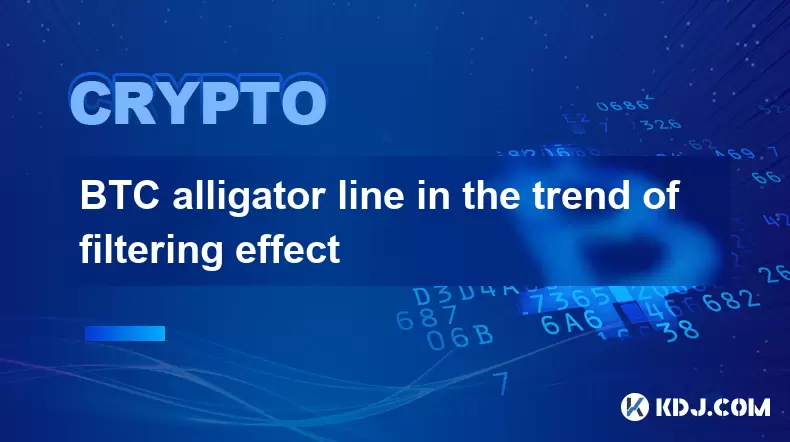
BTC alligator line in the trend of filtering effect
Jun 09,2025 at 06:50pm
Understanding the BTC Alligator Line in Cryptocurrency TradingIn the world of BTC trading, technical analysis plays a crucial role in identifying potential price movements. One such tool that has gained popularity among traders is the Alligator Line, a concept introduced by Bill Williams. The Alligator Line is not just an indicator but a system designed...
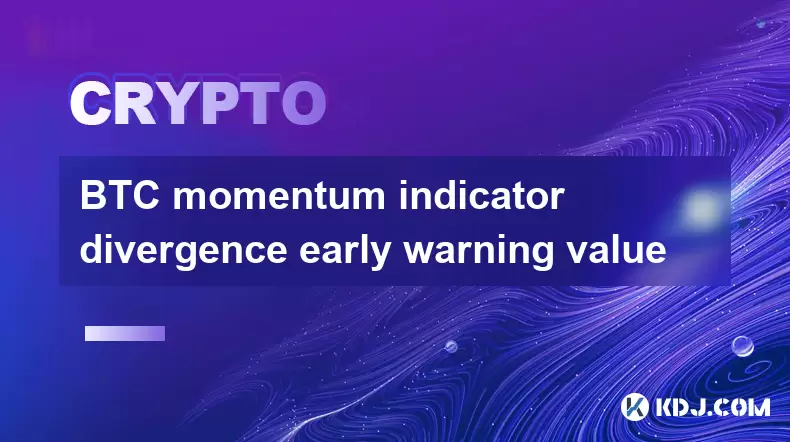
BTC momentum indicator divergence early warning value
Jun 09,2025 at 06:00pm
Understanding BTC Momentum Indicator DivergenceIn the realm of cryptocurrency trading, BTC momentum indicator divergence is a crucial concept for traders aiming to detect potential reversals in price trends. The momentum indicator measures the rate of change in Bitcoin’s price over a specified period, typically 10 or 14 days. When this indicator diverge...

Bitcoin Super Simplified Science Popularization No need to worry about not understanding
Jun 12,2025 at 04:02am
What Is Bitcoin in the Simplest Terms?Bitcoin is a decentralized digital currency, which means it allows people to send and receive money directly over the internet without needing banks or governments. It was created in 2009 by an anonymous person or group using the pseudonym Satoshi Nakamoto. The core idea behind Bitcoin is to give individuals full co...

What is Bitcoin? Learn Bitcoin in three minutes
Jun 12,2025 at 02:57am
What Is Bitcoin?Bitcoin is a decentralized digital currency, also known as a cryptocurrency, that enables peer-to-peer transactions without the need for intermediaries like banks or governments. It was introduced in 2009 by an anonymous individual or group using the pseudonym Satoshi Nakamoto. The core idea behind Bitcoin is to offer a form of money tha...

BTC OBV energy tide and price divergence correlation
Jun 10,2025 at 11:57am
Understanding BTC OBV Energy TideBTC OBV (On-Balance Volume) Energy Tide is a term used to describe the combination of On-Balance Volume analysis and energy tide indicators in the Bitcoin market. OBV is a technical indicator that uses volume flow to predict changes in stock or cryptocurrency prices. It adds volume on up days and subtracts volume on down...

BTC cloud chart conversion line and baseline cross signal
Jun 10,2025 at 03:14am
Understanding BTC Cloud Chart: Ichimoku Kinkō Hyū BasicsThe BTC cloud chart, also known as the Ichimoku Kinkō Hyū, is a powerful technical analysis tool used by cryptocurrency traders to evaluate price trends, momentum, and potential reversal points. Unlike traditional candlestick charts, the Ichimoku system incorporates multiple lines and a 'cloud' (Ku...

BTC alligator line in the trend of filtering effect
Jun 09,2025 at 06:50pm
Understanding the BTC Alligator Line in Cryptocurrency TradingIn the world of BTC trading, technical analysis plays a crucial role in identifying potential price movements. One such tool that has gained popularity among traders is the Alligator Line, a concept introduced by Bill Williams. The Alligator Line is not just an indicator but a system designed...

BTC momentum indicator divergence early warning value
Jun 09,2025 at 06:00pm
Understanding BTC Momentum Indicator DivergenceIn the realm of cryptocurrency trading, BTC momentum indicator divergence is a crucial concept for traders aiming to detect potential reversals in price trends. The momentum indicator measures the rate of change in Bitcoin’s price over a specified period, typically 10 or 14 days. When this indicator diverge...
See all articles





















